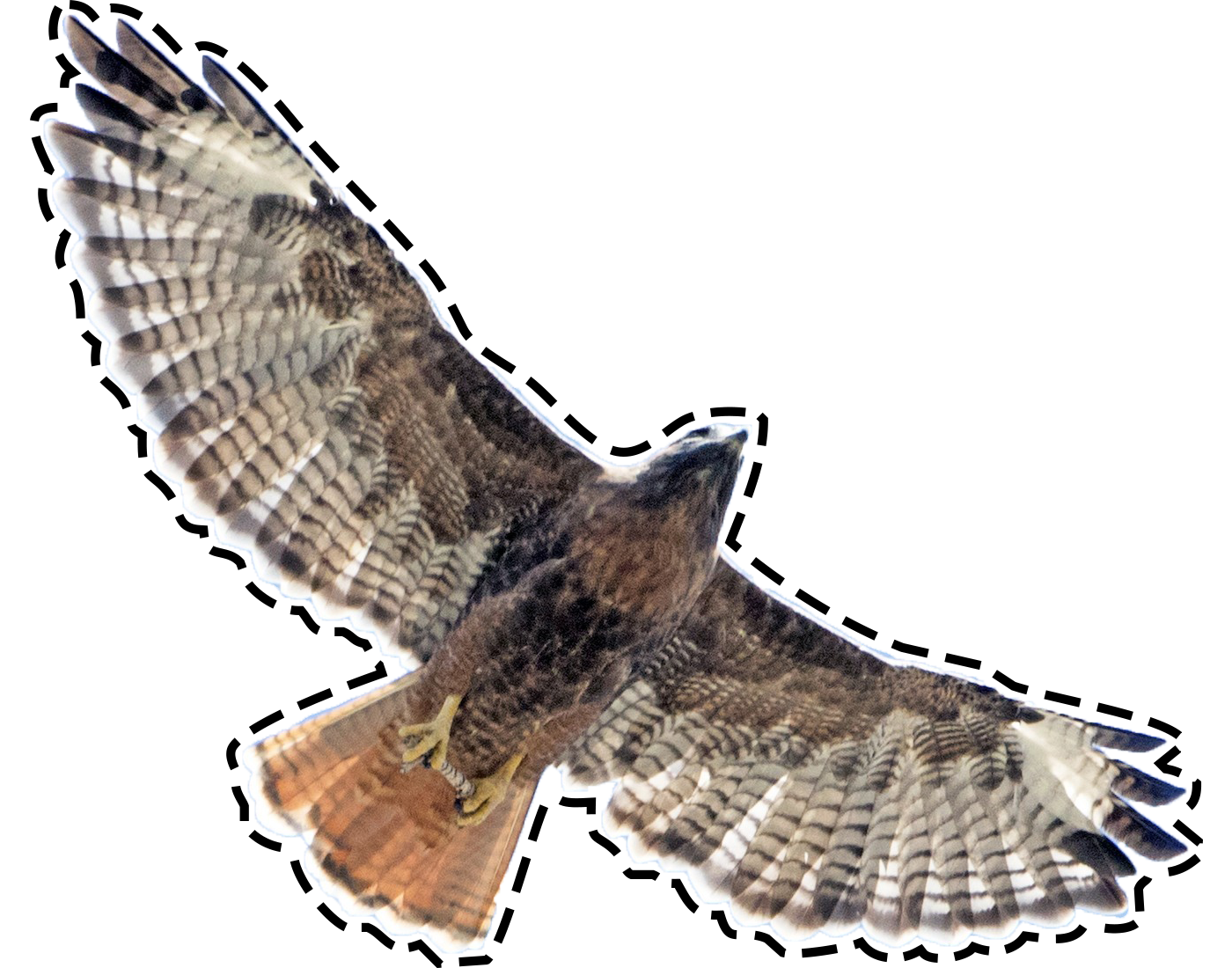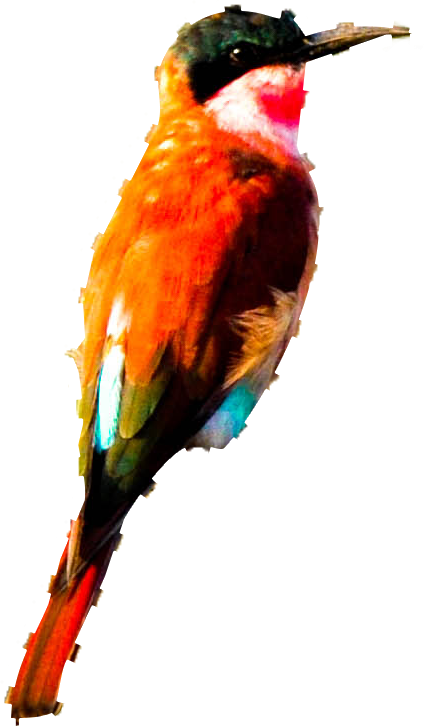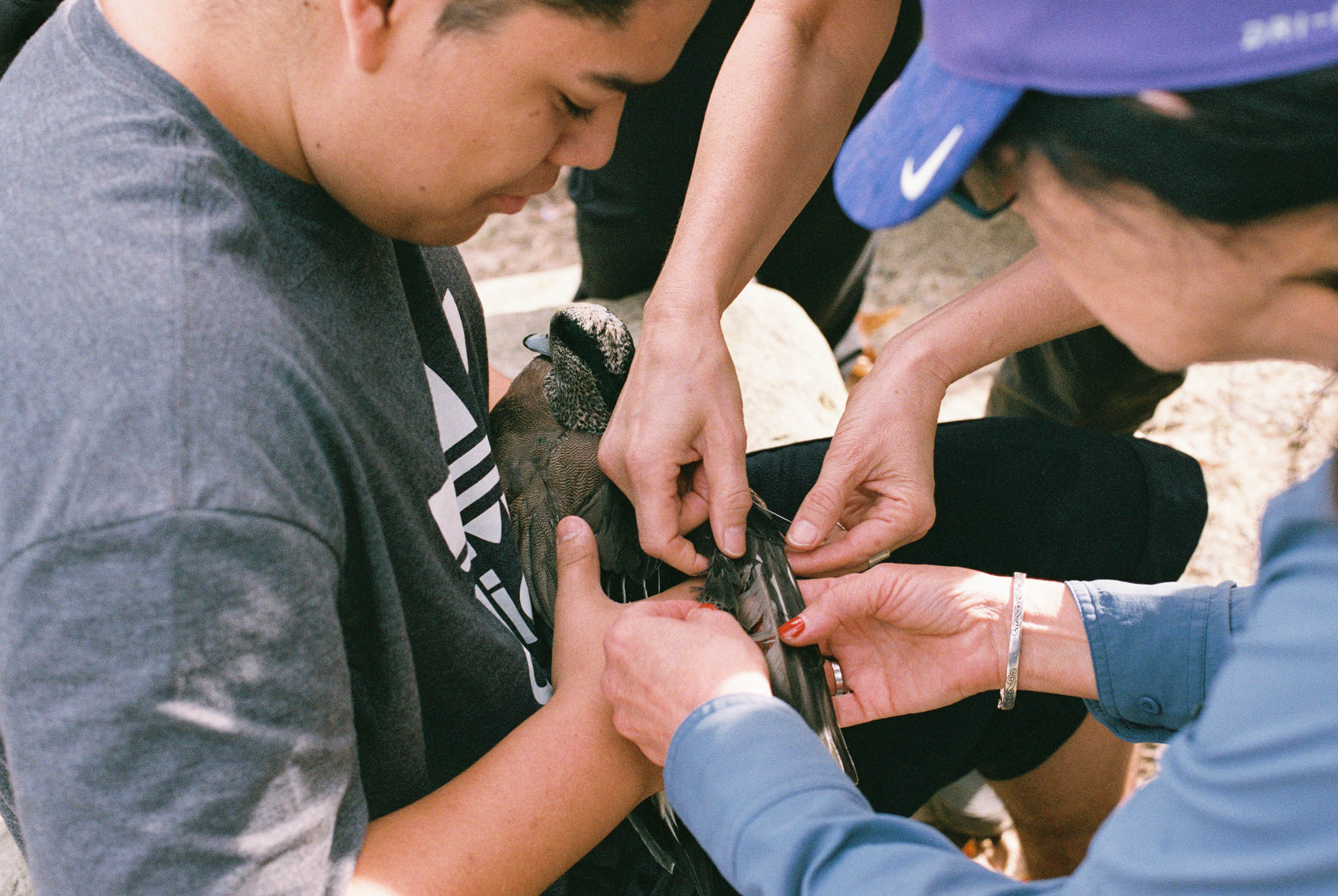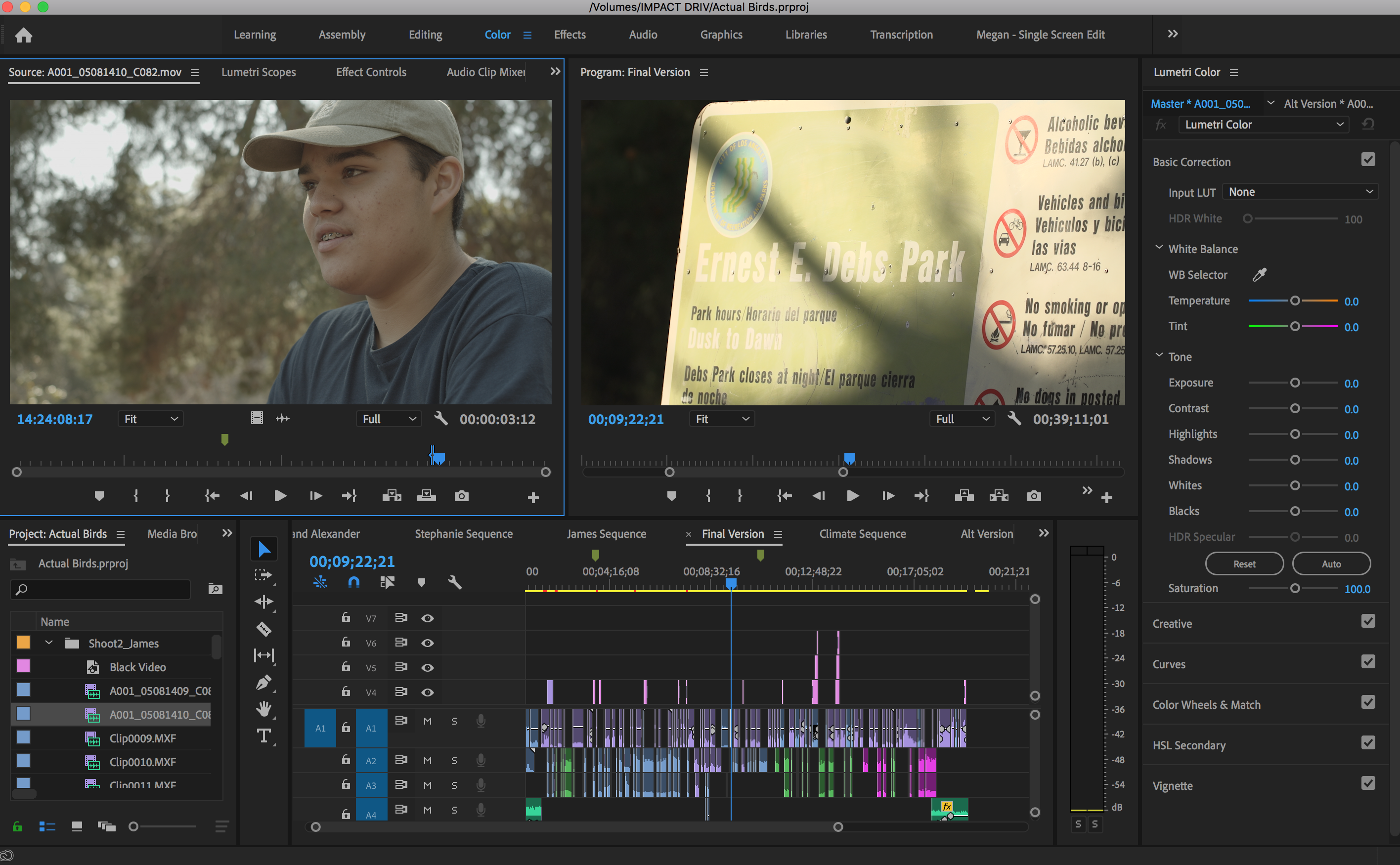
Hello! I'm a red tailed hawk named Cinnamon. You can find me at Kenneth Hahn or in the documentary.
You also can see some other birds around here. The bird below me is a female Mallard who live in Los Angeles, the bird to my left is a Northern Cardinal who lives on Long Island, and the color changing fellow is a Southern carmine bee-eater who lives in South Africa.
I don't know how those last two made it on the website but they have some great travel stories.

Abstract
As The Birds Fly explores the culture of bird watching in Los Angeles and its intersection with climate change and sustainability. A subculture that is often portrayed one dimensionally, As the Birds Fly captures the subtleties and intricacies of birding. This thesis takes the form of a short documentary, which includes interviews with birders, as well as scientists and researchers who speak more directly to the issues facing birds and our environment.
Bird watching is one of the most widespread pastimes in America, as over 43 million people reported watching birds in 2016. The National Audubon Society, which was founded to protect birds, has over 500 chapters and over 500,000 members. Bird watchers have their own social norms and language, and while what they are doing is recreational, through their observations they are also seeing the real effects of climate change, often before others do. Birders have noticed changes in bird populations, and many are considering the implications of climate change on their hobby and the animals they admire.

This is Stephanie, who you will meet if you watch the documentary. Over to the left of the video, you'll also see James, who is also featured in the story. I met both of them at about 8AM at Kenneth Hahn State Park over winter break, as we were all on one of LA Audubon's many bird walks. While I didn't have a video camera, on that one walk we saw almost 40 species of birds, including two types of hawks, two owls, and an Osprey catching a fish. We also saw a duck get trapped in a fishing line, which James had to remove.

“Our imagination is struck only by what is great; but the lover of natural philosophy should reflect equally on little things.”
-Alexander von Humboldt

Process
I started coming up with ideas for my thesis in September of 2019, but didn't really decide on what I wanted to do until at least October. While I have always liked taking pictures of birds, I never considered myself a bird watcher, but after seeing an episode of High Maintenance featuring a birder, I felt that this was a deep, caring community. Then, I read an article highlighting how state birds were vanishing from their states. This led me to finaly realize what I wanted to work on for my final project, and I created the below video as a framework for what I wanted to achieve and highlight.
In December, I went on a bird walk to learn more about what more serious bird watchers did, as well as to check out possible locations and start meeting more bird watchers. That trip solidified my desire to pursure this topic, and you can read more about it over to the right. I began researching birds in relation to climate change, and was also reading a book about Alexander von Humboldt, whose ideas of nature as an interconnected web that needed to be protected rather than exploited revolutionized science in the early 1800's.
In January, I began setting up interview, and by March I had filmed interviews with everyone in the piece. I used generally the same questions in each interview, including "What first drew you to bird watching?", "What do people not understand about bird watching?", and "How will a decline in bird populations affect humans?" By the middle of March, I had the intro finished and was beginning to log all of the footage, and was able to get great feedback from other Media Arts and Practice students in the thesis class when they watched the 3 minute teaser. I was also simultaneously working on this website. With help from my professor, Eric Fanghanel I was starting to put together the general framework for the website, as you can see in the below image.
Although by this point much of the state was shutting down due to covid-19, I already had enough footage to put together a rough cut. Bird watching also happens to be a very easy activity to pursue while quarantined, and the tree in front of my house is often frequented by birds. There is even a shot of a Cooper's hawk who was hanging out in our tree one day, and noticing him so close, I quickly ran to grab the camera. I was using a Sony FS5, normally with a Canon 100-400 f4.5-5.6 lens attached, and USC Annenberg and Dan Birman allowed me to hold onto it during quarantine, which came in very handy to get a few additional shots I needed for the documentary. The first full rough draft was finished by the end of April, and hopefully by the time you are reading this, the official final version is embedded.




